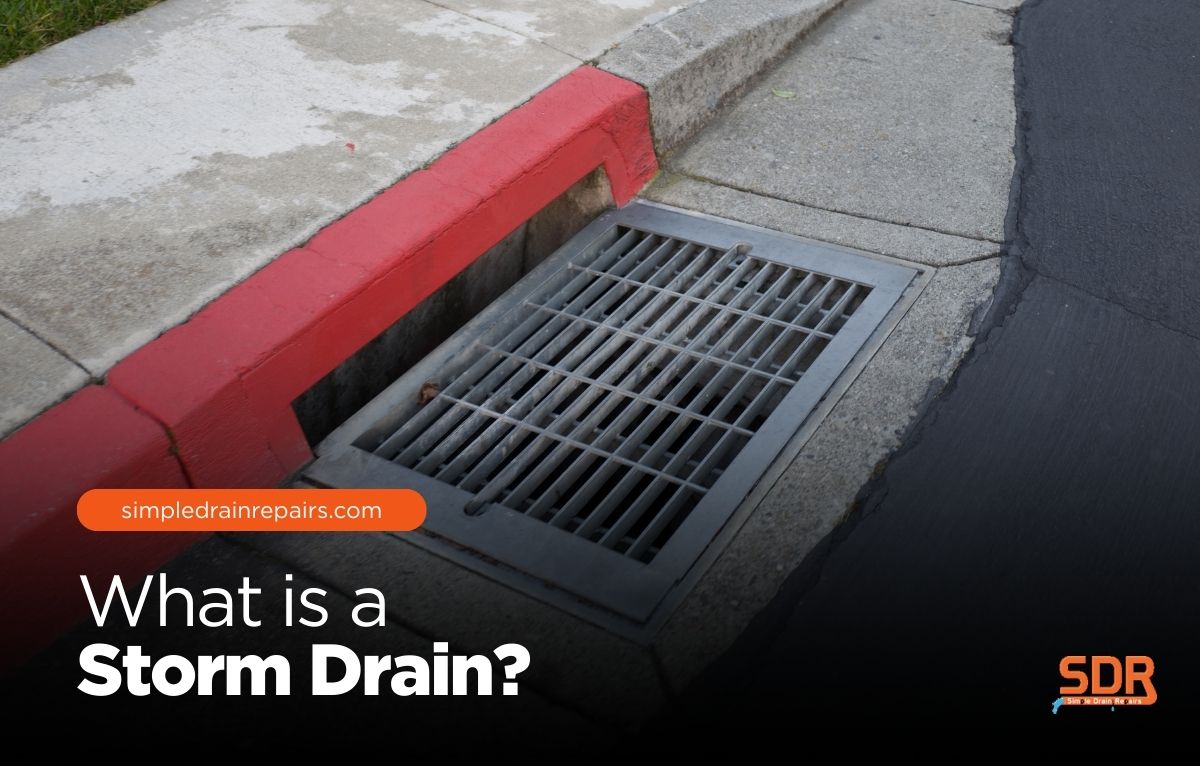
Storm drains play an essential role in keeping water away from streets, parking lots, and properties. You may not think about them often, but without a functioning storm drain, even a short period of heavy rain could cause flooding, damage foundations, and create costly repairs.
Understanding what is a storm drain, how it works, and the problems it can face will help property owners take better care of their investment and prevent water damage from becoming a major issue.
A storm drain is designed to capture and direct rainwater runoff away from buildings and paved areas. These drains prevent water from pooling in driveways, parking lots, and yards by moving it into underground systems that connect to local waterways or treatment facilities.
When asking what is a storm drain, the answer is simple: it is a crucial part of infrastructure that keeps water from overwhelming properties and streets.
By diverting rainwater, storm drains reduce flooding and protect roads from erosion. They also help keep basements dry, maintain the integrity of landscaping, and reduce standing water that could attract pests.
For both residential and commercial properties, storm drains are part of a larger drainage system that protects against water-related damage.
Storm drains are usually found along curbs, parking lots, and low-lying areas where water naturally collects. When rain falls, water flows across hard surfaces until it reaches the drain opening.
Grates or inlets filter out larger debris, while the water flows into underground pipes. These pipes then move the water into retention basins, streams, or municipal drainage systems.
The design is simple but effective. By moving water quickly and efficiently, storm drains prevent flooding during heavy rains and storms.
However, like any system, they require upkeep to stay in working order. For example, clogged grates or pipes can restrict water flow, while damaged underground sections can lead to backups and property damage.
Storm drains are exposed to outdoor conditions year-round, which makes them vulnerable to buildup and damage. Some of the most common issues include:
When these problems go unchecked, they can lead to flooding, pooling water, and even long-term property damage. In severe cases, these issues can compromise driveways, foundations, and even the interior of homes or businesses.
Knowing what is a storm drain and how it can fail helps property owners stay proactive.
There are several clear indicators that a storm drain may need professional care. Water pooling near the drain or along walkways often means the system is clogged or blocked underground.
Slow drainage during or after rainfall is another warning sign that water cannot move through the pipes as it should.
Visible debris or trash around the grate can also suggest that more buildup lies within the system itself. Unpleasant odors coming from the drain opening can indicate stagnant water or buildup that requires cleaning.
Finally, repeated flooding in basements, driveways, or parking lots after storms often points to a storm drain system that is failing to carry water away properly.
By recognizing these issues early, property owners can avoid more extensive repairs and protect their property from water damage.
Keeping a storm drain in good condition involves regular inspection and cleaning. Most clogs form slowly, starting with leaves, sediment, or grease buildup.
Without regular upkeep, the flow narrows until it can no longer move water properly.
Here’s a simple checklist for property owners to follow:
Regular maintenance not only protects the property but also reduces repair costs in the long run. Preventive care is always less expensive than fixing major damage after a storm.
In addition, ongoing maintenance keeps your property safe and helps avoid disruptions to everyday life.
While minor debris can be cleared by hand, larger issues call for expert equipment and techniques. Professionals use high-pressure hydro jetting, mechanical cleaning tools, and camera inspections to identify hidden problems inside the drain line.
These methods are far more effective than quick fixes and provide lasting results.
Trenchless repair methods can restore damaged pipes without tearing up landscaping or pavement, saving both time and money. Instead of digging large trenches, specialists insert liners or use bursting technology to repair or replace pipes from within.
This approach minimizes disruption to daily routines and avoids costly restoration of lawns or concrete.
For commercial or industrial properties, professional storm drain services are especially important since downtime from flooding can disrupt operations. Restaurants, retail complexes, and factories all depend on reliable drainage.
With proper inspection and repair, businesses avoid costly interruptions and keep their properties safe.
A storm drain may seem like a small part of your property, but it plays a big role in keeping water damage at bay. By understanding what is a storm drain, recognizing signs of trouble, and keeping up with maintenance, property owners can protect their homes and businesses from flooding and structural problems.
Even though storm drains are built to last, they cannot be ignored. Regular attention ensures the system works when you need it most.
For property owners in New Jersey, Simple Drain Repairs provides expert storm drain cleaning and repair services. Our trenchless solutions minimize disruption and come backed by a lifetime guarantee. Contact us today to schedule an inspection and keep your property safe from the risks of water damage.